APC 2013 Annual Report Download - page 18
Download and view the complete annual report
Please find page 18 of the 2013 APC annual report below. You can navigate through the pages in the report by either clicking on the pages listed below, or by using the keyword search tool below to find specific information within the annual report.-
 1
1 -
 2
2 -
 3
3 -
 4
4 -
 5
5 -
 6
6 -
 7
7 -
 8
8 -
 9
9 -
 10
10 -
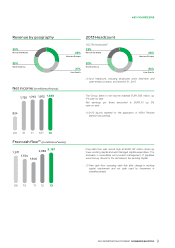 11
11 -
 12
12 -
 13
13 -
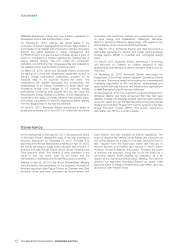 14
14 -
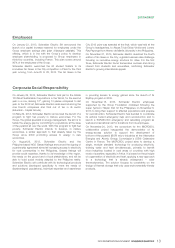 15
15 -
 16
16 -
 17
17 -
 18
18 -
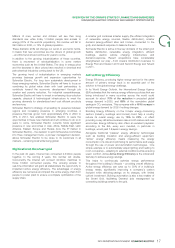 19
19 -
 20
20 -
 21
21 -
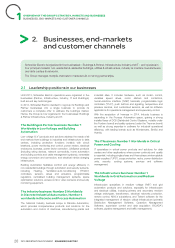 22
22 -
 23
23 -
 24
24 -
 25
25 -
 26
26 -
 27
27 -
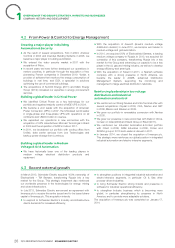 28
28 -
 29
29 -
 30
30 -
 31
31 -
 32
32 -
 33
33 -
 34
34 -
 35
35 -
 36
36 -
 37
37 -
 38
38 -
 39
39 -
 40
40 -
 41
41 -
 42
42 -
 43
43 -
 44
44 -
 45
45 -
 46
46 -
 47
47 -
 48
48 -
 49
49 -
 50
50 -
 51
51 -
 52
52 -
 53
53 -
 54
54 -
 55
55 -
 56
56 -
 57
57 -
 58
58 -
 59
59 -
 60
60 -
 61
61 -
 62
62 -
 63
63 -
 64
64 -
 65
65 -
 66
66 -
 67
67 -
 68
68 -
 69
69 -
 70
70 -
 71
71 -
 72
72 -
 73
73 -
 74
74 -
 75
75 -
 76
76 -
 77
77 -
 78
78 -
 79
79 -
 80
80 -
 81
81 -
 82
82 -
 83
83 -
 84
84 -
 85
85 -
 86
86 -
 87
87 -
 88
88 -
 89
89 -
 90
90 -
 91
91 -
 92
92 -
 93
93 -
 94
94 -
 95
95 -
 96
96 -
 97
97 -
 98
98 -
 99
99 -
 100
100 -
 101
101 -
 102
102 -
 103
103 -
 104
104 -
 105
105 -
 106
106 -
 107
107 -
 108
108 -
 109
109 -
 110
110 -
 111
111 -
 112
112 -
 113
113 -
 114
114 -
 115
115 -
 116
116 -
 117
117 -
 118
118 -
 119
119 -
 120
120 -
 121
121 -
 122
122 -
 123
123 -
 124
124 -
 125
125 -
 126
126 -
 127
127 -
 128
128 -
 129
129 -
 130
130 -
 131
131 -
 132
132 -
 133
133 -
 134
134 -
 135
135 -
 136
136 -
 137
137 -
 138
138 -
 139
139 -
 140
140 -
 141
141 -
 142
142 -
 143
143 -
 144
144 -
 145
145 -
 146
146 -
 147
147 -
 148
148 -
 149
149 -
 150
150 -
 151
151 -
 152
152 -
 153
153 -
 154
154 -
 155
155 -
 156
156 -
 157
157 -
 158
158 -
 159
159 -
 160
160 -
 161
161 -
 162
162 -
 163
163 -
 164
164 -
 165
165 -
 166
166 -
 167
167 -
 168
168 -
 169
169 -
 170
170 -
 171
171 -
 172
172 -
 173
173 -
 174
174 -
 175
175 -
 176
176 -
 177
177 -
 178
178 -
 179
179 -
 180
180 -
 181
181 -
 182
182 -
 183
183 -
 184
184 -
 185
185 -
 186
186 -
 187
187 -
 188
188 -
 189
189 -
 190
190 -
 191
191 -
 192
192 -
 193
193 -
 194
194 -
 195
195 -
 196
196 -
 197
197 -
 198
198 -
 199
199 -
 200
200 -
 201
201 -
 202
202 -
 203
203 -
 204
204 -
 205
205 -
 206
206 -
 207
207 -
 208
208 -
 209
209 -
 210
210 -
 211
211 -
 212
212 -
 213
213 -
 214
214 -
 215
215 -
 216
216 -
 217
217 -
 218
218 -
 219
219 -
 220
220 -
 221
221 -
 222
222 -
 223
223 -
 224
224 -
 225
225 -
 226
226 -
 227
227 -
 228
228 -
 229
229 -
 230
230 -
 231
231 -
 232
232 -
 233
233 -
 234
234 -
 235
235 -
 236
236 -
 237
237 -
 238
238 -
 239
239 -
 240
240 -
 241
241 -
 242
242 -
 243
243 -
 244
244 -
 245
245 -
 246
246 -
 247
247 -
 248
248 -
 249
249 -
 250
250 -
 251
251 -
 252
252 -
 253
253 -
 254
254 -
 255
255 -
 256
256 -
 257
257 -
 258
258 -
 259
259 -
 260
260 -
 261
261 -
 262
262 -
 263
263 -
 264
264 -
 265
265 -
 266
266 -
 267
267 -
 268
268 -
 269
269 -
 270
270 -
 271
271 -
 272
272 -
 273
273 -
 274
274 -
 275
275 -
 276
276 -
 277
277 -
 278
278 -
 279
279 -
 280
280 -
 281
281 -
 282
282 -
 283
283 -
 284
284 -
 285
285 -
 286
286 -
 287
287 -
 288
288 -
 289
289 -
 290
290 -
 291
291 -
 292
292 -
 293
293 -
 294
294 -
 295
295 -
 296
296 -
 297
297 -
 298
298 -
 299
299 -
 300
300 -
 301
301 -
 302
302 -
 303
303 -
 304
304 -
 305
305 -
 306
306 -
 307
307 -
 308
308 -
 309
309 -
 310
310 -
 311
311 -
 312
312 -
 313
313 -
 314
314 -
 315
315 -
 316
316 -
 317
317 -
 318
318 -
 319
319 -
 320
320 -
 321
321 -
 322
322 -
 323
323 -
 324
324 -
 325
325 -
 326
326 -
 327
327 -
 328
328 -
 329
329 -
 330
330 -
 331
331 -
 332
332
 |
 |

1OVERVIEW OF THE GROUP'S STRATEGY, MARKETS AND BUSINESSES
SCHNEIDER ELECTRIC STRATEGY AND MARKET OPPORTUNITIES
Schneider Electric strategy
1.
andmarket opportunities
Schneider Electric, the global specialist in energy management with operations in over 100countries, leverages its
portfolio to make energy safe, reliable, efficient, productive and green.
While global energy demand is set to rise to support growing industrialization and urbanization, the scarcity of resources
is becoming more pressing. Everyone needs to do more with less. With available and mature technologies that can save
up to 30% of business-as-usual energy consumption, energy efficiency is a key component of this energy challenge.
Schneider Electric is the leader in energy management and a core partner of all actors in the energy supply chain to
make the efficiency economy a reality.
Our mission
1.1
Schneider Electric is a partner that provides products, solutions efficient: delivering energy efficient solutions adapted to the
l
and systems for all actors of the energy supply chain to ensure specific needs of each market;
that energy is: productive: expanding the use of automation and
l
connectivity, providing services throughout an installation’s life
safe: protecting people and assets;
l
cycle;and
reliable: guaranteeing ultra-secure, ultra-pure and
l
green: offering solutions that are environmentally friendly.
l
uninterrupted power especially for critical applications;
Megatrends in our environment are creating opportunities
1.2
Three megatrends are of particular importance for Schneider attractiveness; and have a low upfront investment, because cities
Electric’s business: urbanization; digitization and industrialization. across the world need to balance their budget.
Urbanization
Schneider Electric delivers urban efficiency by bringing in
technology with tried and tested solutions and by working on the
integration of operating systems and information systems. As
cities involve many stakeholders –local and regional
Cities today contain 50% of the world’s population, consume
governments, private companies, utilities, real estate developers,
75% of global energy consumption and give off 80% of
investors,etc.– Schneider Electric drives collaboration to ensure
greenhouse gas emissions. And cities are growing: by 2050,
buy-in of all these stakeholders.
they will be home to 70% of the people in the world. Cities face
urban challenges of unprecedented scale: scarcity of resources Schneider Electric already works with more than 200cities
such as energy and water; environmental pressure and pollution; across the world, and helps provide visible benefits to cities and
aging and overloaded infrastructure; traffic congestion; their constituents:
crime,etc. up to 30% energy savings;
l
All over the world, cities need to become smarter: more efficient, up to 15% reduction of water losses;
l
more liveable and more sustainable. This means: up to 20% reduction of travel time and traffic delays;
l
improving the efficiency of the city’s underlying urban
las well as environmental, social and economic benefits.
l
infrastructures (electricity grid, gas distribution system, water
Shift in the world economic center &
distribution system, public transportation systems, public
services, commercial buildings, hospitals, homes,etc);
industrialization
becoming a better place to live, work and play;
l
reducing its environmental impact – lower carbon footprint,
lNon-OECD economies represented 35% of world GDP in 2012
urban regeneration, parks and trees,etc. and should reach close to 58% by 2030. Their share of global
So what cities need today are solutions to their most acute energy demand will continue to rise –from 55% in2010 to close
pain-points that: deliver the short-term results that constituents to 65% by 2035– because of demographics, industrialization,
need; provide visible, measurable results that increase urbanization, and growing affluence.
16 2013 REGISTRATION DOCUMENT SCHNEIDER ELECTRIC
